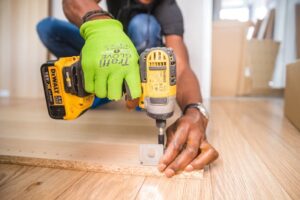
Whether you live in an area that is known for brutal winters or dangerously hot summers, it is vital you pay attention to many parts of your home to ensure they are adequately protected from the extreme weather that comes along now and then. While you may believe trying to offer this protection will be more than you can handle, most of the tasks that can keep your home in great shape are relatively easy to accomplish on your own. To guard against snow, heat, wind, and more, make sure you do the following tasks on a regular basis.
Create a Buffer Zone
Around the outside of your home, create a buffer zone that will reduce the amount of vegetation near your home’s exterior. This is especially important if you live in an area that is prone to wildfires, since the buffer zone could be the difference between saving or losing your home in the event of a fire.
Roof Repairs
If you live in an area that has harsh winters or perhaps strong thunderstorms or even hurricanes, always take time to inspect your roofing for any repairs that may need to be made. This can include not only loose or missing shingles, but also the flashing around your chimney. Also, while you are inspecting your roof, take note of any cracks or other signs of wear and tear on your chimney, since these may also need to be repaired.
Install Water Shut-Off Device
In areas that are known for bitterly cold winters, pipes that freeze and then burst are one of the most common problems many homeowners face each year. If you live in such an area and have had parts of your home flooded from broken pipes, install a home water shut-off device. By doing so, you will have a way to ensure your home’s main water valve will be turned off should a leak take place.
Install Solar Shades
Should your home be located in a very hot climate where the sun’s UV rays constantly shine in your windows, you may want to install what are known as solar shades on the outside of your residence. Retractable both manually and electronically, they are made to reduce the UV rays that can lead to fading and cracking of furniture, flooring, and more.
Once you decide to take a proactive approach to keeping your home protected against the many different aspects of extreme weather, you’ll save time and money while giving yourself peace of mind.


